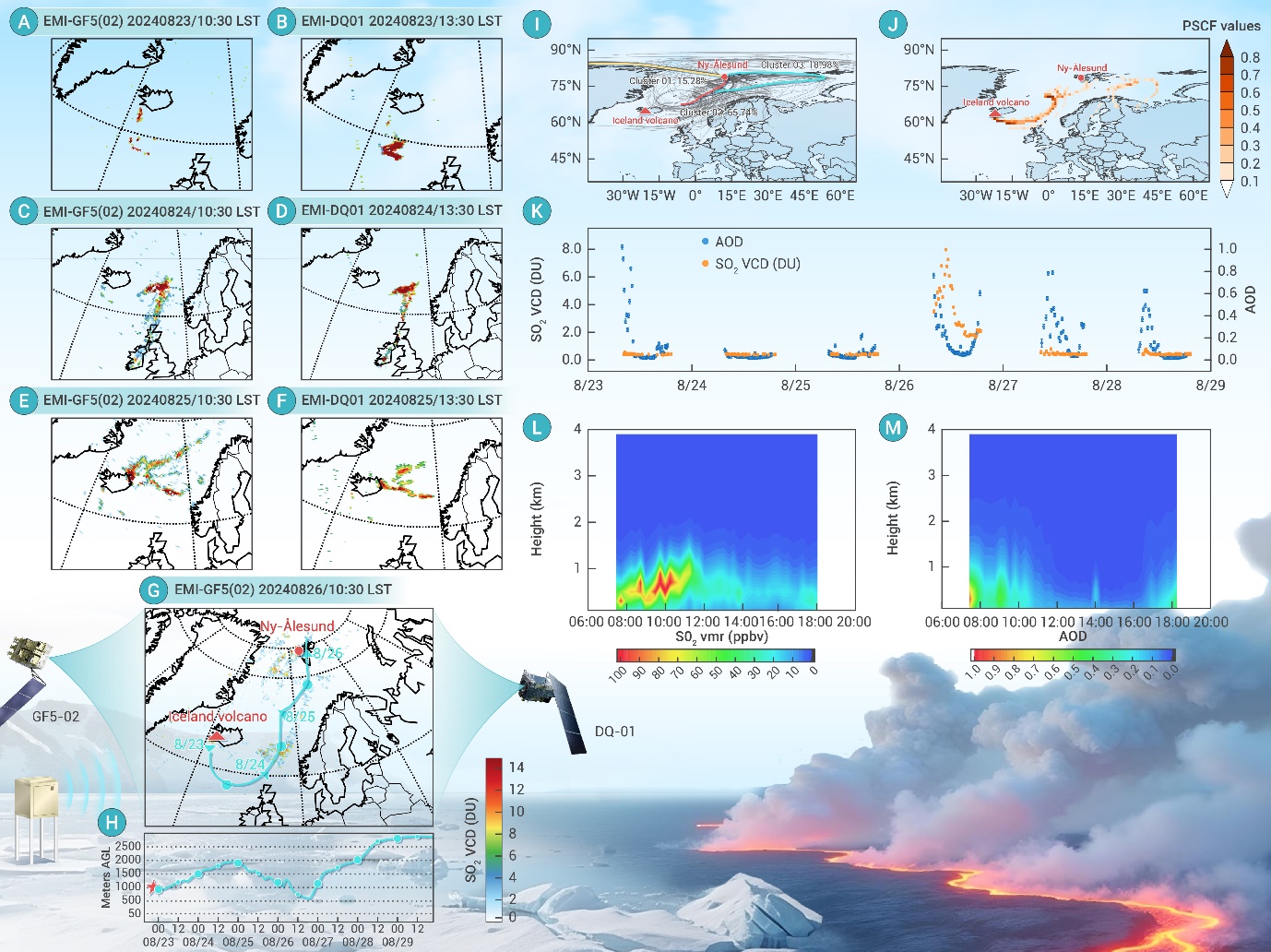
A research team led by Profs. SI fuqi and LUO Yuhan from the Hefei Institutes of Physical Science of the Chinese Academy of Sciences has uncovered surprising evidence of cross-border pollution reaching the Arctic, originating from an Icelandic volcanic eruption. The researchers used a cutting-edge combination of satellite and ground-based monitoring to track sulfur dioxide emissions from the Sundhnukagigar volcano, which erupted in 2023. This toxic gas traveled over 2,000 kilometers to reach the Svalbard Islands, causing severe smog in the region.
The relevant results were published in The Innovation Geoscience.
"Our study highlights the far-reaching impact of volcanic eruptions on the environment," said WU Kaili, a member of the team, "It's far beyond the immediate vicinity."
Volcanic eruptions act as "chemical spray bombs," releasing millions of tons of gases, including sulfur dioxide, into the atmosphere. These gases can transform into sulfate particles that contribute to acid rain and reflect sunlight, which may cause global cooling. Additionally, fine volcanic ash particles—less than 2.5 microns in diameter—can penetrate deep into the lungs, triggering respiratory problems in humans.
The research team employed advanced tools like the Environmental Trace Gases Monitoring Instrument, installed on two Chinese satellites. These satellites provide daily global scans, tracking pollutants with remarkable precision. In addition to satellite data, they also used measurements from China's Yellow River Station in the Arctic, the only continuous atmospheric monitoring station in the region. This station tracks gases like sulfur dioxide, ozone, and bromine oxide, offering invaluable vertical profile data.
Their findings were striking: 80% of the sulfur dioxide pollution in Ny-Ålesund, a remote Arctic region, was traced directly to the volcanic eruption in Iceland. By combining satellite observation with ground-based measurements, the researchers created a detailed map of how the pollution traveled, providing insights into the source and impact of the eruption's emissions.
The work paves the way for more precise, real-time environmental monitoring and response, protecting ecosystems and human health worldwide, according to the team.

Impact of Icelandic volcanic eruption on the Arctic based on satellite, ground observations and PSCF analysis (Image by WU Kaili)

86-10-68597521 (day)
86-10-68597289 (night)

52 Sanlihe Rd., Xicheng District,
Beijing, China (100864)

